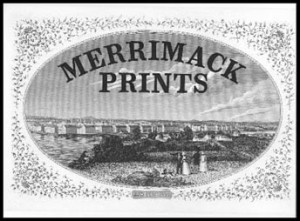‘Yellowstone and Lowell’
Some of the readers of this blog know that for the past year I have been writing a book about the origin and impact of Lowell’s national park. Below is a “sidebar” piece that will appear in the “Making the Park” chapter. The manuscript is nearly complete, and Lowell National Historical Park will begin searching for a publisher this winter. The working title is “Mill Power: Reclaiming Lowell’s Place and Story.” The narrative covers the period from 1965 to 2012. There will be lots of pictures and familiar names in the book.–PM
.
Yellowstone and Lowell
.
In January 1872, Senator Samuel Pomeroy of Kansas and Representative Henry L. Dawes of Massachusetts brought forward legislation in the United States Congress calling for an expanse of land “near the headwaters of the Yellowstone river” in the Wyoming territory to be “reserved and withdrawn from settlement, occupancy, or sale under the laws of the United States, and dedicated and set apart as a public park or pleasuring ground for the benefit and enjoyment of the people.” Without extensive debate, the act of Congress was approved in both houses and signed by President Ulysses S. Grant on March 1, 1872. As Dayton Duncan and Ken Burns write in The National Parks: America’s Best Idea, “this would be a national park—the first national park in the history of the world.” Yosemite Park, created by Congress, predated this decision, but the state of California managed Yosemite and had been doing so since 1864. Yellowstone is the beginning for national parks. In the years leading up to the establishment of Yellowstone, the nation had learned about its stunning vistas and wilderness through the printed illustrations, photographs, and paintings of artists such as Thomas Moran and William Henry Jackson. As with Yosemite, the natural features of Yellowstone compelled those encountering them to want to convey to others what they experienced, to somehow capture in line, form, and color the majestic character of the places.
By 1872, Lowell, Massachusetts, had been a visitor attraction for 50 years. It was not a national park, but it was in the words of author John Updike, “the nation’s first industrial park.” From the start people behaved towards Lowell as if it was a place “apart,” something new in form and scale and purpose. In the first painted view by Benjamin Mather in 1825, ranged around the riverine edges of what had been Cheever’s Farm and Fletcher’s Farm are the multi-storied red-brick Merrimack Manufacturing Company, Lowell Machine Shop, and related boarding houses set among valley trees. A parade of oil painters and illustrators followed from the mid-1820s through the 1850s, in particular. Their renderings of the factories and urban scene are portrayed with all the care and reverence that one sees in depictions of mountainsides and cataracts out west.
In Thomas Moran’s epic tableau The Grand Canyon of the Yellowstone (1872), based on his sketches from an excursion in 1871, the view is from a ledge that came to be known as Artist Point. Two figures dwarfed by massive trees and rock formations contemplate Nature in its glory. “All my tendencies are toward idealization,” wrote Moran. The same is true for the praising-pictures of early Lowell, including David Claypool Johnston’s engraving of the “mile of mills” from the north bank of the Merrimack River in 1850. Formally dressed figures on promenade in the foreground regard the industrial marvel and gesture toward the long red wall along the river under a tall sky and grand clouds. At the bottom left, bent over his work is an artist in a cap whose hand is at work making his own version of what we are looking at in the image. This high-ground vantage on the Dracut side of the river could be Lowell’s Artist Point.
—Paul Marion (c) 2012 by Lowell National Historical Park, U.S. Dept. of the Interior


I don’t think I ever noticed that artist before in that historical print. Having just spent the entire weekend hanging out with all of the artists at Western Avenue Studios made me really appreciate this post. It is interesting to know Lowell’s art connections go way back